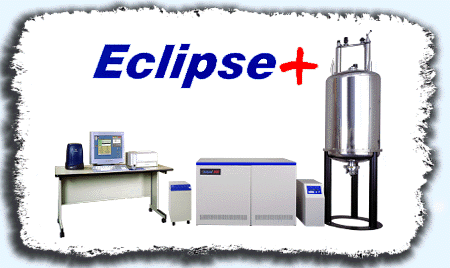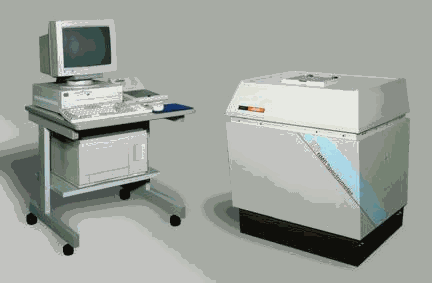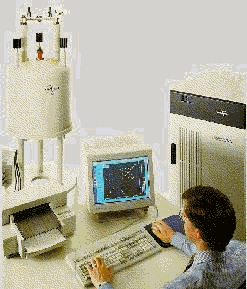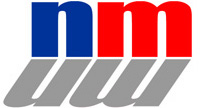

Instruments
Continuous Wave(CW) NMR Spectrometers
Continuous wave NMR spectrometers have the sample irradiated by a continuous radio frequency (rf) signal while in a strong magnetic field. The spectrum is generated by sweeping a small change in magnetic field over the sample.
Fourier Transform (FT) NMR Spectrometer
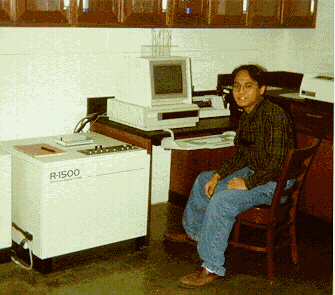
Anasazi Instruments
EFT-60
Fourier Transform Nuclear Magnetic Resonance Spectrometer
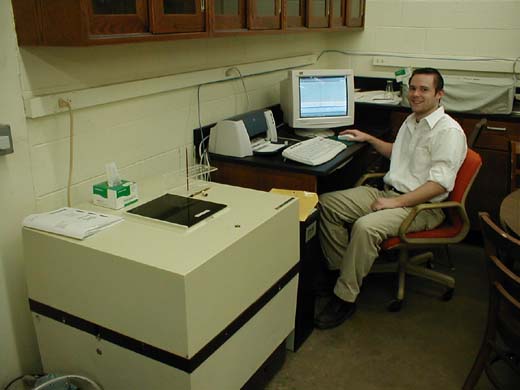
| Many nuclei can be studied on this spectrometer using a permanent magnet, including H-1, C-13, F-19, Si-29, P-31, Sn-117, and Sn 119. Data collected on this instrument can be investigated using NUTS NMR software on one of the departmental workstations. The instrument has recently been upgraded to a Wideband configuration. Click here for a PowerPoint slide show show C-1, C-13, Si-29, and Sn-117/Sn-119 analysis of a sample. |
Fourier transform NMR spectrometers have the sample irradiated by a pulse of radio frequency (rf) electromagnetic radiation while exposed to a strong magnetic field. The resulting relaxation is monitored as the Free Induction Decay (FID) and represents a time domain spectrum. This spectrum is then converted into a frequency domain spectrum by a Fourier transformation.
Varian Gemini FT-NMR
| The instrument pictured above uses a superconducting solenoid to produce a magnetic field of approximately 4.69 Tesla. This instrument is equipped with 200 MHz H-1 and 50.2 MHz C-13 probes. |
The advantage of the Fourier Transform NMR (FT-NMR), over Continuous Wave NMR,
is the ability to collect multiple scans that are averaged, increasing the signal-to-noise
ratio. This is particularly important for C-13 NMR where the natural abundance
of the isotope is so small.
Virtual NMR Booth Index
